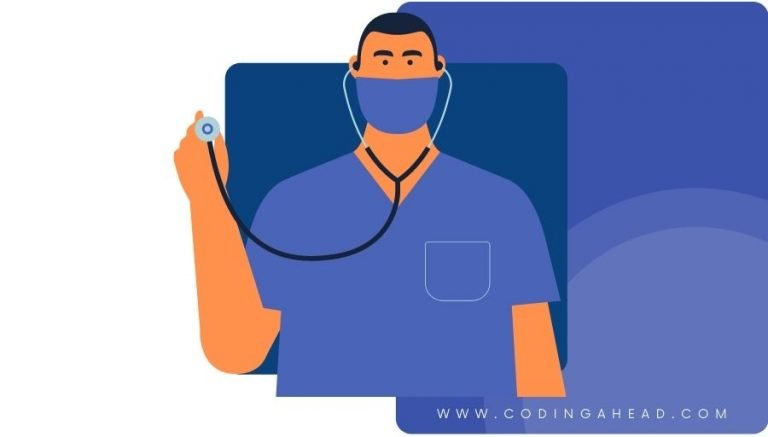How To Use CPT Code 82962
CPT 82962 refers to the blood glucose monitoring procedure using FDA-approved devices specifically for home use. This article will cover the description, procedure, qualifying circumstances, appropriate usage, documentation requirements, billing guidelines, historical information, similar codes, and examples of CPT 82962.
1. What is CPT 82962?
CPT 82962 is a medical billing code used to describe the procedure of blood glucose monitoring at home using FDA-approved devices. This code is utilized by medical coders and billers to accurately document and bill for the services provided to patients who require regular blood glucose monitoring as part of their diabetes management plan.
2. 82962 CPT code description
The official description of CPT code 82962 is: “Glucose, blood by glucose monitoring device(s) cleared by the FDA specifically for home use.”
3. Procedure
The 82962 procedure involves the following steps:
- The patient washes their hands with soap and warm water.
- A fresh lancet is inserted into the lancet device.
- The blood glucose meter and the test strip are prepared.
- The patient pricks the tip of one of their fingers with the sharp lancet.
- The drop of blood is applied onto the test strip, which is placed on the glucose meter.
- The glucose level in the blood is displayed on the LCD screen of the device after a few seconds.
4. Qualifying circumstances
Patients who are eligible to receive CPT code 82962 services are those diagnosed with diabetes or prediabetes and require regular blood glucose monitoring as part of their treatment plan. This may include patients with type 1 diabetes, type 2 diabetes, gestational diabetes, or other forms of diabetes. The frequency of blood glucose monitoring may vary depending on the patient’s specific needs and healthcare provider’s recommendations.
5. When to use CPT code 82962
It is appropriate to bill the 82962 CPT code when a patient with diabetes or prediabetes is using an FDA-approved blood glucose monitoring device specifically for home use to regularly check their blood sugar levels. This code should be used for each instance of blood glucose monitoring performed by the patient at home.
6. Documentation requirements
To support a claim for CPT 82962, the following information needs to be documented:
- Patient’s diagnosis (e.g., type 1 diabetes, type 2 diabetes, gestational diabetes, or prediabetes)
- Frequency of blood glucose monitoring as recommended by the healthcare provider
- Specific FDA-approved blood glucose monitoring device used by the patient
- Date and time of each blood glucose monitoring instance
- Results of each blood glucose monitoring instance
7. Billing guidelines
When billing for CPT code 82962, it is essential to follow the specific guidelines and rules set by the payer. Some tips for billing this code include:
- Ensure that the patient’s diagnosis and need for regular blood glucose monitoring are clearly documented in the medical record.
- Verify that the blood glucose monitoring device used by the patient is FDA-approved for home use.
- Document each instance of blood glucose monitoring, including the date, time, and results.
- Check with the payer for any additional documentation requirements or limitations on the frequency of billing for CPT 82962.
8. Historical information
CPT 82962 was added to the Current Procedural Terminology system on January 1, 1993. There have been no updates to the code since its addition.
9. Similar codes to CPT 82962
Five similar codes to CPT 82962 and how they differentiate are:
- CPT 82947: This code is used for glucose testing in a laboratory setting, not for home use.
- CPT 82950: This code refers to a glucose test performed using a reagent strip, which is different from the glucose monitoring device used in CPT 82962.
- CPT 82951: This code is for a glucose tolerance test, which involves multiple blood glucose measurements over a specific time period.
- CPT 83036: This code is for a hemoglobin A1C test, which measures the average blood glucose level over the past 2-3 months.
- CPT 99091: This code is for the collection and interpretation of physiologic data, which may include blood glucose levels, but is not specific to home blood glucose monitoring.
10. Examples
Here are 10 detailed examples of CPT code 82962 procedures:
- A patient with type 1 diabetes uses an FDA-approved blood glucose monitoring device to check their blood sugar level before breakfast.
- A patient with type 2 diabetes checks their blood glucose level using an FDA-approved device before going to bed.
- A pregnant patient with gestational diabetes monitors her blood sugar level after lunch using an FDA-approved blood glucose monitoring device.
- A patient with prediabetes checks their blood glucose level before and after exercising using an FDA-approved device.
- A patient with type 1 diabetes checks their blood sugar level before administering insulin using an FDA-approved blood glucose monitoring device.
- A patient with type 2 diabetes monitors their blood glucose level after a meal using an FDA-approved device to assess the effectiveness of their medication.
- A patient with gestational diabetes checks their blood sugar level in the morning using an FDA-approved blood glucose monitoring device to ensure it is within the target range.
- A patient with type 1 diabetes checks their blood glucose level during a period of illness using an FDA-approved device to determine if any adjustments to their insulin regimen are needed.
- A patient with type 2 diabetes checks their blood sugar level before a doctor’s appointment using an FDA-approved blood glucose monitoring device to provide accurate information for their healthcare provider.
- A patient with prediabetes monitors their blood glucose level after a meal using an FDA-approved device to assess the impact of dietary changes on their blood sugar levels.



